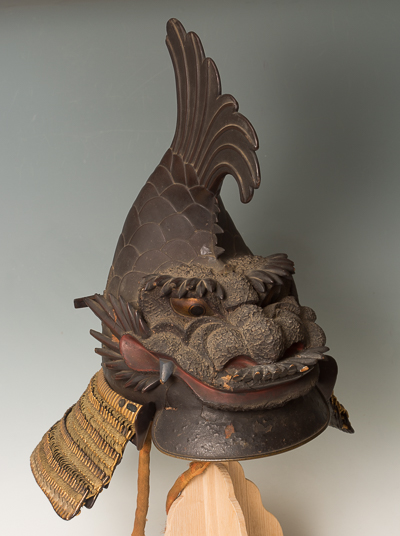4 interesting facts about the japanese Samurai helmets
-
 One exciting aspect of these Japanese samurai helmets is that some of them are dating back to the 5th century B.C., long time before the rise of the Samurai class. These kabuto helmets are traditionally known as the mabizashi-tsuke kabuto translated as a visor-attached helmet and are believed to have originated in the Korean or Chinese regions and contains a central characteristic trait.
One exciting aspect of these Japanese samurai helmets is that some of them are dating back to the 5th century B.C., long time before the rise of the Samurai class. These kabuto helmets are traditionally known as the mabizashi-tsuke kabuto translated as a visor-attached helmet and are believed to have originated in the Korean or Chinese regions and contains a central characteristic trait.
-
In almost all the kabuto there can be found a small opening located at the top of the helmet known as hachimanza. The purpose of this hole was probably for the passing of the warrior’s hair-knot. Many historians think that the practice of keeping a long topknot by the warriors was mostly ended in the late Muromachi period, however, the opening on the top of the kabuto was left for simpler purposes like ventilation or to make the artifact more prominent by displaying the attached plates on the helmet. On lamellar kabuto, the hole is necessary because plates would overlap too much, but it is quite rare that it is filled with something.
-
The kabuto unquestionably played a very important and enduring role in describing the ancient war code of the ancient Japanese warriors. But the symbolism of the Samurai helmet far surpassed its military function and incorporated into Japanese wisdom and everyday sayings. One Japanese saying ‘Katte Kabuto no o o shimeyo, translated as ‘tighten your kabuto after winning’ which refers to the insight that you shouldn’t rest very soon after you win because that could result in a loss later on. Another such phrase that uses Kabuto symbolism is ‘kabuto o nugu’ which literally means ‘take off the kabuto’ which is used to describe surrender or sometimes defeat.
-
In the 16th century, Samurai begun to use the so-called kawari kabuto literally means unusual helmet. They were used to help high-ranking officials stand out in the fight. While they looked unusual, the helmets were battle-ready. The customization could help the Samurai mimic an intimidating figure in a battle. The helmets might look heavy, but the elaborate decorations added to the helmet were light because they used materials like paper or leather.
Copyright © 2016 - giuseppe piva - VAT: 05104180962

